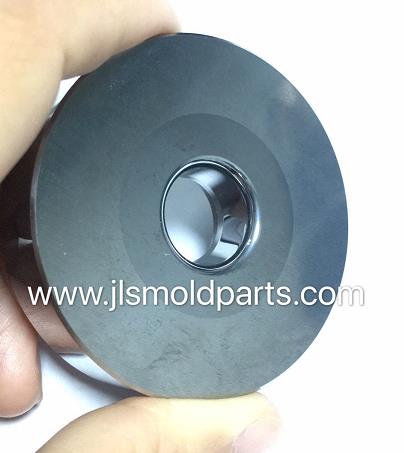 Tungsten Carbide Extrusion Dies
Tungsten Carbide Extrusion Dies
The WC-Co (Carbide) is the name for certain metal that is combined with tungsten carbide (WC) and cobalt (Co) which is a binder and sinters at a high temperature and produced. Generally. It is considered to have the hardness next to the diamond, but it can be changed the ratio of WC and Co depending on some usages. The characteristic can be changed by adding Ni or the Cr, and the materials manufacturer develops various types of WC-Co (Carbide). The WC-Co (Carbide) is mainly used as materials of a field that required the abrasion resistance and the impact resistance characteristics such as a cutting tool or the die. We would choose any type of WC-Co (carbide) depending on the specifications of the customer.
The History of WC-Co (Carbide)
1909 Developed by GE (United States)
1923 Osram AG (German) acquires the patent,
1929 Krupp (ThyssenKrupp AG German) named as “WIDIA”& launched
1927 Siburan Company (now called Toshiba Company) and Tokyo Denki Company is the first companies developed tungsten carbide.
Carbide Extrusion Dies
Extrusion is a process used to create objects of a fixed cross-sectional profile. A material is pushed through a die of the desired cross-section. The two main advantages of this process over other manufacturing processes are its ability to create very complex cross-sections, and to work materials that are brittle, because the material only encounters compressive and shear stresses. It also forms parts with an excellent surface finish.
Drawing is a similar process, which uses the tensile strength of the material to pull it through the carbide dies. This limits the amount of change that can be performed in one step, so it is limited to simpler shapes, and multiple stages are usually needed. Drawing is the main way to produce wire. Metal bars and tubes are also often drawn.
Extrusion may be continuous (theoretically producing indefinitely long material) or semi-continuous (producing many pieces). The extrusion process can be done with the material hot or cold. Commonly extruded materials include metals, polymers, ceramics, concrete, modeling clay, and foodstuffs. The products of extrusion are generally called “extrudates”.
Tungsten carbide extrusion die is made of Taiwan CB-Ceratizit and super wear-resistant hard alloy material, which makes the product of high hardness, excellent wear resistance, good toughness, the good surface roughness of internal hole. The surface of the “extrudates” is bright and smooth and of long service life, etc. Tungsten carbide extrusion dies are widely used in the extrusion forming of various metal products such as copper, iron, aluminum, and stainless steel.
Extrusion is the process of deforming a sheet metal material into a cylindrical or box-shaped part by a stamping, pulling ring or metal mold process. The deep drawing is usually carried out on the anti-wrinkle pressure plate of the double-action press, and the anti-wrinkle pressure plate can effectively prevent the edge of the protrusion from wrinkling when being pulled into the mold.
Drawing technology is widely used in the production process. Deep drawing is used in many industries. For example, it can be used in the automotive industry to produce automotive parts; it can also be used to make household products such as stainless steel cutlery





